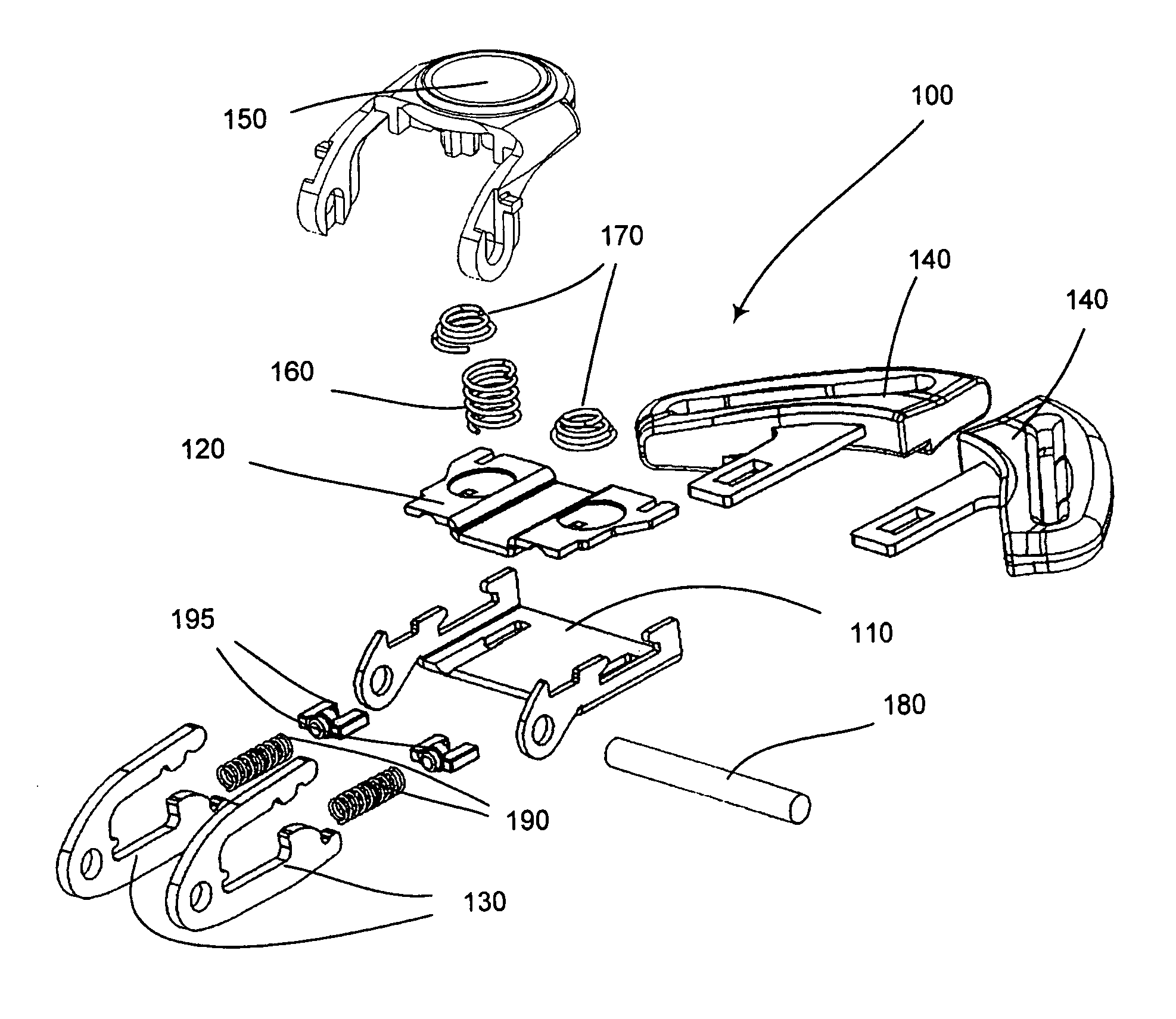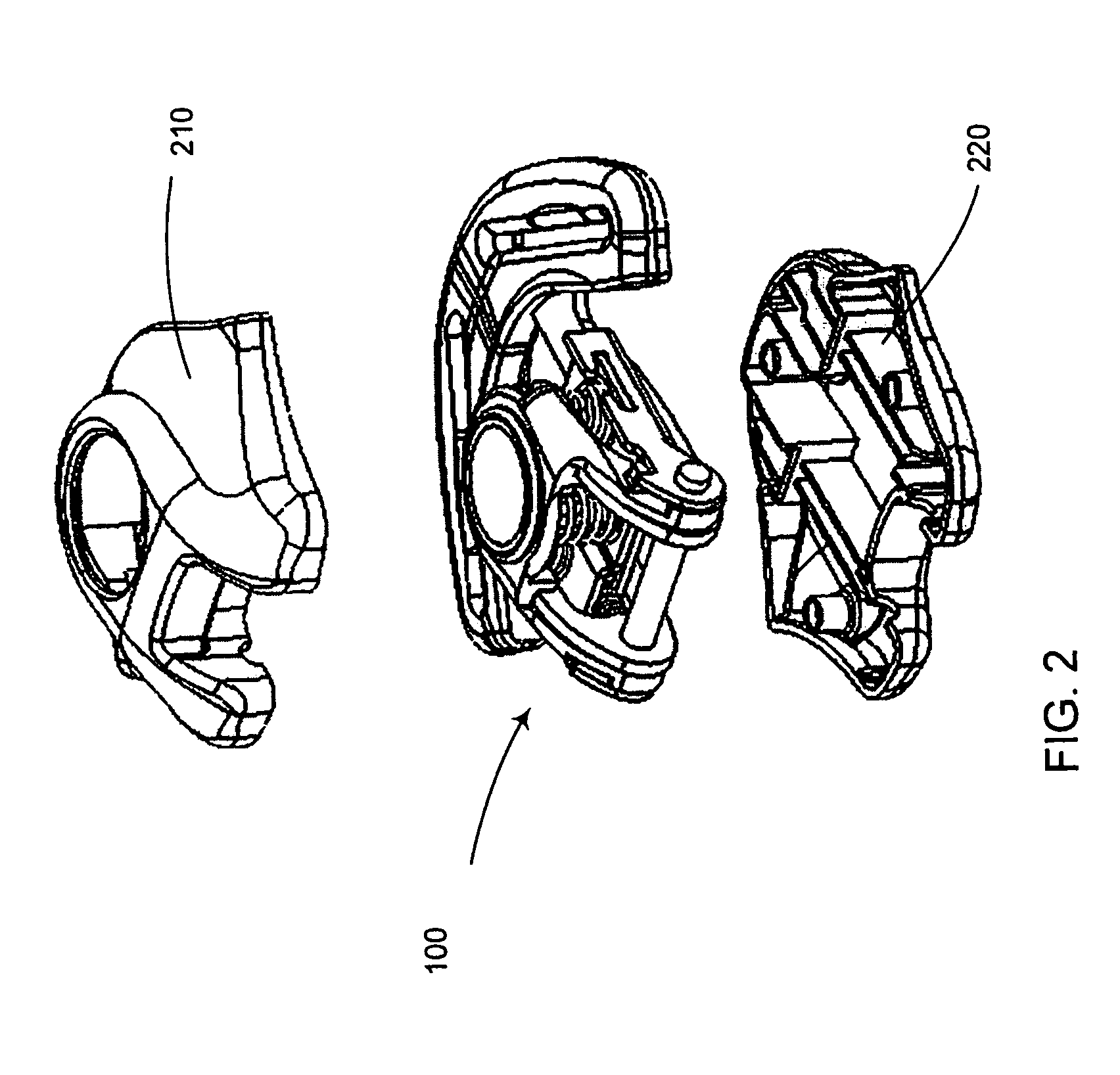Seat belt arrangements for child safety seats
a seat belt and child safety technology, applied in the field of seat belt arrangements, can solve the problems of large difficulty in series production, easy damage to the housing, and limited load capacity
- Summary
- Abstract
- Description
- Claims
- Application Information
AI Technical Summary
Benefits of technology
Problems solved by technology
Method used
Image
Examples
Embodiment Construction
[0031]Reference is first made to FIG. 1, showing the different parts of a buckle mechanism 100 according to the present invention in an exploded view. The buckle mechanism 100 according to the present invention comprises lower 110 and upper plates 120, two latches 130, two tongue members 140, a button 150, a button return spring 160, two latch springs 170, an anchor pin 180 and optionally two ejector springs 190 and two ejector spring spacers 195. The buckle mechanism 100 is to be placed within a housing 200 consisting of an upper 210 and a lower casing 220, see FIGS. 2 and 14.
[0032]As is best shown in FIG. 3, the lower plate 110 is formed with a substantially flat central portion 111, having two sidewalls 112 projecting upwards at opposite sides of the flat portion 111. The flat portion 111 is further equipped with two openings 113 for receiving the two latches 130, and with two grooves 114, leading to the openings 113, for receiving the optional ejector springs 190 and ejector spr...
PUM
 Login to View More
Login to View More Abstract
Description
Claims
Application Information
 Login to View More
Login to View More - R&D
- Intellectual Property
- Life Sciences
- Materials
- Tech Scout
- Unparalleled Data Quality
- Higher Quality Content
- 60% Fewer Hallucinations
Browse by: Latest US Patents, China's latest patents, Technical Efficacy Thesaurus, Application Domain, Technology Topic, Popular Technical Reports.
© 2025 PatSnap. All rights reserved.Legal|Privacy policy|Modern Slavery Act Transparency Statement|Sitemap|About US| Contact US: help@patsnap.com



